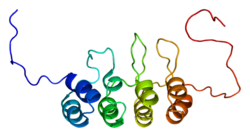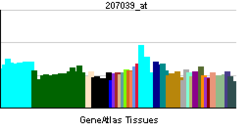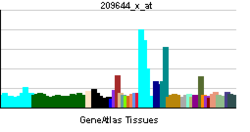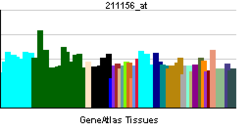Clinical relevance
In human cancer cell lines derived from various tumor types, a high frequency of genetic and epigenetic alterations (e.g., promoter hyper-methylation, homozygous deletion or mutation) in the CDKN2A gene has been observed. Accordingly, epigenetic/genetic modulation of changes in CDKN2A might be a promising strategy for prevention or therapy of cancer.
The CDKN2A gene is located on the chromosome 9p21 locus, which is intriguing for several reasons. First, this region is well known in cancer genetics as one of the most common sites of deletions leading to hereditary forms of cutaneous malignant melanoma. [11] [27] Second, genome wide association studies have reported a significant association of chromosome 9p21 with coronary artery disease and myocardial infarction [28] as well as the progression of atherosclerosis. [29]
Furthermore, changes in CDKN2A status are highly variable depending on the type of cancer. In addition to skin cancer such as melanoma, changes of CDKN2A have been described in a wide spectrum of cancer types such as gastric lymphoma, [30] Burkitt's lymphoma, [31] head & neck squamous cell carcinoma, [32] glioma, [33] oral cancer, [34] pancreatic adenocarcinoma, [35] non-small cell lung carcinomas, [36] esophageal squamous cell carcinoma, [37] gastric cancer, [38] bladder cancer, [33] osteosarcoma, [33] colorectal cancer, [39] breast cancer, [33] cervical cancer, [33] epithelial ovarian carcinoma, [40] endometrial cancer [33] and prostate cancer. [41]
Familial melanoma
CDKN2A is made up of four sections of exons – exon 1β, exon 1α, exon 2, and exon 3. These exons are used to create two proteins named p16 and p14ARF. Protein p16, created by exon 1α and exon 2, is responsible for tumor creation of genetic melanoma. When working normally, p16 binds to the cyclin dependent kinases CDK4 to inhibit their ability to create tumors, but when inactivated the suppression no longer occurs. [42] When a mutation occurs in protein p16, it prevents the protein kinase of CDK4, which results in the inactivation of the tumor suppressor gene. [42] This starts the development of melanoma.
Melanoma only occurs in a small proportion of the population. If only two family members have melanoma, there is a 5% chance somebody in the next generation will acquire the mutated gene. Also, there is a 20-40% chance of getting hereditary melanoma in a family if 3 or more people in the past generation had melanoma. For those who carry the hereditary mutated gene CDKN2A, acquiring skin cancer is a lot easier. [43] Those who have the gene are far more likely to get melanoma a second or third time compared to those who don't genetically have this gene. [44] The population that is affected by this mutation has a high familial history of melanoma or atypical moles and birth marks in large numbers, a history of primary melanoma/cancers in general, immunosuppression, skin that burns easily and doesn't tan, freckling, blue eyes, red hair, or a history of blistering. [43] People with these high risk factors are more likely to carry inherited mutations in CDKN2A. [44] For those who have a gene mutation, the severity is also dependent on the environmental surroundings. Out of those who carry the gene, those who express the phenotype and actually developed melanoma have a history of more sun exposure, and light skin compared to those who also had the gene but never actually developed melanoma. [44] This suggests that this gene co-works with ones surrounding environment. If two individuals are selected who carry the CDKN2A mutation, and both genetically have the same probability of acquiring skin cancer, but one is from Australia and the other is from Europe, there is a 58% the European will acquire cancer compared to a 91% chance the Australian will get it. [44] This is because the factors mentioned earlier pertaining to those who are more susceptible to the disease and also dependent on the amount of sunscreen one wears and the UV radiation potency in their environment. [43]
Clinical marker
A multi-locus genetic risk score study based on a combination of 27 loci, including the CDKN2A gene, identified individuals at increased risk for both incident and recurrent coronary artery disease events, as well as an enhanced clinical benefit from statin therapy. The study was based on a community cohort study (the Malmo Diet and Cancer study) and four additional randomized controlled trials of primary prevention cohorts (JUPITER and ASCOT) and secondary prevention cohorts (CARE and PROVE IT-TIMI 22). [9]
Aging
Activation of the CDKN2A locus promotes the cellular senescence tumor suppressor mechanism, which is a permanent form of growth arrest. As senescent cells accumulate with aging, expression of CDKN2A increases exponentially with aging in all mammalian species tested to date, and has been argued to serve as a biomarker of physiological age. [45] Notably, a recent survey of cellular senescence induced by multiple treatments to several cell lines does not identify CDKN2A as belonging to a "core signature" of senescence markers. [46]
In animals
A variant in the CDKN2A locus present in the founder of Bernese mountain dogs around 200 years ago predisposes the breed to histiocytic sarcoma. [47]
This page is based on this
Wikipedia article Text is available under the
CC BY-SA 4.0 license; additional terms may apply.
Images, videos and audio are available under their respective licenses.







